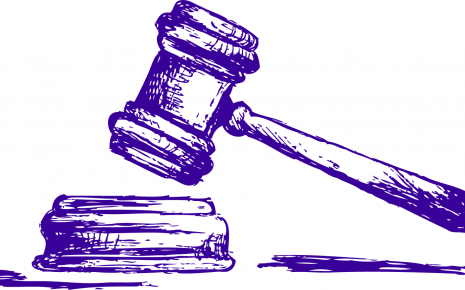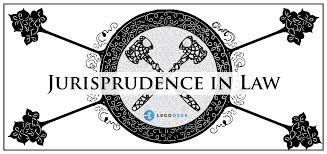Doctrine of Colourable Legislation
Introduction
The doctrine of colourable legislation is a legal principle used in constitutional law to determine the validity of laws enacted by a legislative body. The doctrine suggests that if a legislative body, while staying within its legal powers, enacts a law for a specific purpose that is not the true or stated purpose, it can be considered a "colourable" or disguised exercise of power and may be deemed unconstitutional.
In simpler terms, it deals with situations where the legislature attempts to do something indirectly that it cannot do directly due to constitutional limitations. It involves looking beyond the formal or apparent purpose of a law to determine whether it is actually a pretext for achieving some other, often unconstitutional, objective.
Key Elements:
Key elements of the doctrine of colourable legislation include:
Form v. Substance: Rather than its form, the doctrine is concerned with the true intent or substance of the law. If a law is discovered to be a guise for something else, it can be invalidated even if it seems to be within the legislative body's jurisdiction.
Constitutional Limitations: Colourable Legislation is a common method for disputing laws that aim to exceed constitutional boundaries or violate fundamental rights and freedoms.
Pretextual Laws: Achieving illegitimate or unconstitutional purposes under the guise of a legitimate goal can lead to the invalidation of laws based on this doctrine.
Judicial Review: Courts take on the responsibility of evaluating whether a law is colourable in order to determine its true purpose. This involves analysing both the practical impact and legislative intent. Interpreting a law accurately requires comprehending its intended purpose.
Safeguarding the rule of law is crucial for the legal system to maintain a balance of power. That's where the doctrine of colourable legislation comes in. It prevents legislative power from being abused and preserves the supremacy of the constitution. By ensuring that constitutional limits and rights are not bypassed by legislative actions, it protects the spirit and principles of the constitution. As an important tool, colourable legislation upholds the constitution and ensures that the legal system functions justly.
Explanation:
Camouflaging a law as something else or attempting to overstep constitutional limits is a prime example of the legal principle of colourable legislation. Here are a few examples of situations where the doctrine of colourable legislation may come into play, invalidating laws that appear to be within the jurisdiction of the legislative body but are actually enacted for a different purpose. The covert use of power that disguises the true intent of a law is the heart of this doctrine.
Taxation as Regulation: If a legislature imposes taxes under the guise of regulation, where the true intent is to regulate an industry or activity, this could be considered colourable legislation. If the motive behind imposing a high tax on a specific product is to prohibit its sale rather than generating revenue, such legislation could be labelled as colourable.
Exceeding Jurisdiction: Should a state government attempt to legislate in an area exclusive to another level of government, this can be viewed as questionable legislation, also known as colourable legislation. Take the example of a state government passing a law that disrupts an area of federal jurisdiction.
Discriminatory Laws: Anti-discrimination principles are frequently tied to equal protection, particularly in the context of laws that may seem impartial but are created to unfairly target specific communities or groups. These laws can potentially be challenged under the doctrine of colourable legislation.
Attempt to Bypass Fundamental Rights: It's possible to challenge legislation that tries to bypass fundamental rights guaranteed by the constitution by framing it in a way that violates them. Legislation like this is called colourable and can be challenged by using the example of a law that restricts freedom of speech under the pretext of protecting public order when its actual intent is to suppress dissent.
Overstepping Constitutional Limits: Colourable legislation is when a legislature oversteps its Constitutional limits by passing a law that invades other branches' reserved areas in order to enhance its authority.
Example:
Enacting legislation that seems to regulate traffic safety, but actually aims to limit a specific religious or ethnic group's mobility, exemplifies the colourable legislation doctrine. This is one instance where a state legislature's powers come into play.
Think about a circumstance where a law is enacted by a state legislature that designates particular safety guidelines and speed limits for automobiles. Even though these regulations could be viewed as rational steps for guaranteeing safe roadways, it becomes transparent that the law's genuine objective is to suppress the mobility and journey of a certain religious faction. In such a situation, the legislation could be disputed as colourable legislation as it conceals a prejudiced or unconstitutional purpose (aimed at a particular religious sect) under the pretext of managing vehicular traffic.
Legislation is subject to scrutiny under the doctrine of colourable legislation. This involves an investigation into the ulterior motives behind legislation, in order to determine whether its true aim is unconstitutional. The court will reject laws if they're found to unlawfully discriminate against a group, even if this wasn't the law's apparent purpose.
Conclusion:
The legal concept of colourable legislation is complex and subject to controversy. The determination of a law's colourable nature is reached through a careful analysis of legislative intent and practical impact. Courts play an essential role in ensuring that legislation abides by a country's constitutional principles and boundaries, by assessing its true purpose and impact.
Written By: Md.Imran Wahab, IPS, IGP, Provisioning, West Bengal
Email: [email protected], Ph no: 9836576565
The doctrine of colourable legislation is a legal principle used in constitutional law to determine the validity of laws enacted by a legislative body. The doctrine suggests that if a legislative body, while staying within its legal powers, enacts a law for a specific purpose that is not the true or stated purpose, it can be considered a "colourable" or disguised exercise of power and may be deemed unconstitutional.
In simpler terms, it deals with situations where the legislature attempts to do something indirectly that it cannot do directly due to constitutional limitations. It involves looking beyond the formal or apparent purpose of a law to determine whether it is actually a pretext for achieving some other, often unconstitutional, objective.
Key Elements:
Key elements of the doctrine of colourable legislation include:
Form v. Substance: Rather than its form, the doctrine is concerned with the true intent or substance of the law. If a law is discovered to be a guise for something else, it can be invalidated even if it seems to be within the legislative body's jurisdiction.
Constitutional Limitations: Colourable Legislation is a common method for disputing laws that aim to exceed constitutional boundaries or violate fundamental rights and freedoms.
Pretextual Laws: Achieving illegitimate or unconstitutional purposes under the guise of a legitimate goal can lead to the invalidation of laws based on this doctrine.
Judicial Review: Courts take on the responsibility of evaluating whether a law is colourable in order to determine its true purpose. This involves analysing both the practical impact and legislative intent. Interpreting a law accurately requires comprehending its intended purpose.
Safeguarding the rule of law is crucial for the legal system to maintain a balance of power. That's where the doctrine of colourable legislation comes in. It prevents legislative power from being abused and preserves the supremacy of the constitution. By ensuring that constitutional limits and rights are not bypassed by legislative actions, it protects the spirit and principles of the constitution. As an important tool, colourable legislation upholds the constitution and ensures that the legal system functions justly.
Explanation:
Camouflaging a law as something else or attempting to overstep constitutional limits is a prime example of the legal principle of colourable legislation. Here are a few examples of situations where the doctrine of colourable legislation may come into play, invalidating laws that appear to be within the jurisdiction of the legislative body but are actually enacted for a different purpose. The covert use of power that disguises the true intent of a law is the heart of this doctrine.
Taxation as Regulation: If a legislature imposes taxes under the guise of regulation, where the true intent is to regulate an industry or activity, this could be considered colourable legislation. If the motive behind imposing a high tax on a specific product is to prohibit its sale rather than generating revenue, such legislation could be labelled as colourable.
Exceeding Jurisdiction: Should a state government attempt to legislate in an area exclusive to another level of government, this can be viewed as questionable legislation, also known as colourable legislation. Take the example of a state government passing a law that disrupts an area of federal jurisdiction.
Discriminatory Laws: Anti-discrimination principles are frequently tied to equal protection, particularly in the context of laws that may seem impartial but are created to unfairly target specific communities or groups. These laws can potentially be challenged under the doctrine of colourable legislation.
Attempt to Bypass Fundamental Rights: It's possible to challenge legislation that tries to bypass fundamental rights guaranteed by the constitution by framing it in a way that violates them. Legislation like this is called colourable and can be challenged by using the example of a law that restricts freedom of speech under the pretext of protecting public order when its actual intent is to suppress dissent.
Overstepping Constitutional Limits: Colourable legislation is when a legislature oversteps its Constitutional limits by passing a law that invades other branches' reserved areas in order to enhance its authority.
Example:
Enacting legislation that seems to regulate traffic safety, but actually aims to limit a specific religious or ethnic group's mobility, exemplifies the colourable legislation doctrine. This is one instance where a state legislature's powers come into play.
Think about a circumstance where a law is enacted by a state legislature that designates particular safety guidelines and speed limits for automobiles. Even though these regulations could be viewed as rational steps for guaranteeing safe roadways, it becomes transparent that the law's genuine objective is to suppress the mobility and journey of a certain religious faction. In such a situation, the legislation could be disputed as colourable legislation as it conceals a prejudiced or unconstitutional purpose (aimed at a particular religious sect) under the pretext of managing vehicular traffic.
Legislation is subject to scrutiny under the doctrine of colourable legislation. This involves an investigation into the ulterior motives behind legislation, in order to determine whether its true aim is unconstitutional. The court will reject laws if they're found to unlawfully discriminate against a group, even if this wasn't the law's apparent purpose.
Conclusion:
The legal concept of colourable legislation is complex and subject to controversy. The determination of a law's colourable nature is reached through a careful analysis of legislative intent and practical impact. Courts play an essential role in ensuring that legislation abides by a country's constitutional principles and boundaries, by assessing its true purpose and impact.
Written By: Md.Imran Wahab, IPS, IGP, Provisioning, West Bengal
Email: [email protected], Ph no: 9836576565
Law Article in India
Legal Question & Answers
Lawyers in India - Search By City
LawArticles
How To File For Mutual Divorce In Delhi

How To File For Mutual Divorce In Delhi Mutual Consent Divorce is the Simplest Way to Obtain a D...
Increased Age For Girls Marriage

It is hoped that the Prohibition of Child Marriage (Amendment) Bill, 2021, which intends to inc...
Facade of Social Media

One may very easily get absorbed in the lives of others as one scrolls through a Facebook news ...
Section 482 CrPc - Quashing Of FIR: Guid...

The Inherent power under Section 482 in The Code Of Criminal Procedure, 1973 (37th Chapter of t...
The Uniform Civil Code (UCC) in India: A...

The Uniform Civil Code (UCC) is a concept that proposes the unification of personal laws across...
Role Of Artificial Intelligence In Legal...

Artificial intelligence (AI) is revolutionizing various sectors of the economy, and the legal i...








Please Drop Your Comments